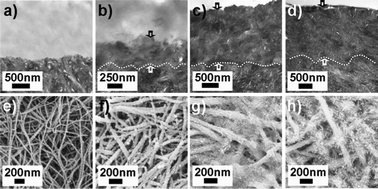Remineralization of dentin collagen by meta-stabilized amorphous calcium phosphate
Abstract
Biomineralization of collagenous mineralized tissues (CMT), in vivo, stands as a precisely cell-controlled process. An organic insoluble collagenous

* Corresponding authors
a
Centre for Biopathways and Biomaterials, Zhejiang University, Hangzhou, Zhejiang 310027, China
E-mail:
rtang@zju.edu.cn
Fax: +86 571 87953736
Tel: +86 571 87953736
b First Affiliated Hospital of Zhejiang University College of Medicine, Hangzhou, Zhejiang 310003, China
c
Qiushi Academy for Advanced Studies, Zhejiang University, Hangzhou, Zhejiang 310027, China
E-mail:
phh@zju.edu.cn
d State Key Laboratory of Silicon Materials, Zhejiang University, Hangzhou, Zhejiang 310027, China
e Centre for Chemistry of High-Performance and Novel Materials, Zhejiang University, Hangzhou, Zhejiang 310027, China
Biomineralization of collagenous mineralized tissues (CMT), in vivo, stands as a precisely cell-controlled process. An organic insoluble collagenous

 Please wait while we load your content...
Something went wrong. Try again?
Please wait while we load your content...
Something went wrong. Try again?
J. Wang, Y. Chen, L. Li, J. Sun, X. Gu, X. Xu, H. Pan and R. Tang, CrystEngComm, 2013, 15, 6151 DOI: 10.1039/C3CE40449H
To request permission to reproduce material from this article, please go to the Copyright Clearance Center request page.
If you are an author contributing to an RSC publication, you do not need to request permission provided correct acknowledgement is given.
If you are the author of this article, you do not need to request permission to reproduce figures and diagrams provided correct acknowledgement is given. If you want to reproduce the whole article in a third-party publication (excluding your thesis/dissertation for which permission is not required) please go to the Copyright Clearance Center request page.
Read more about how to correctly acknowledge RSC content.
 Fetching data from CrossRef.
Fetching data from CrossRef.
This may take some time to load.
Loading related content
